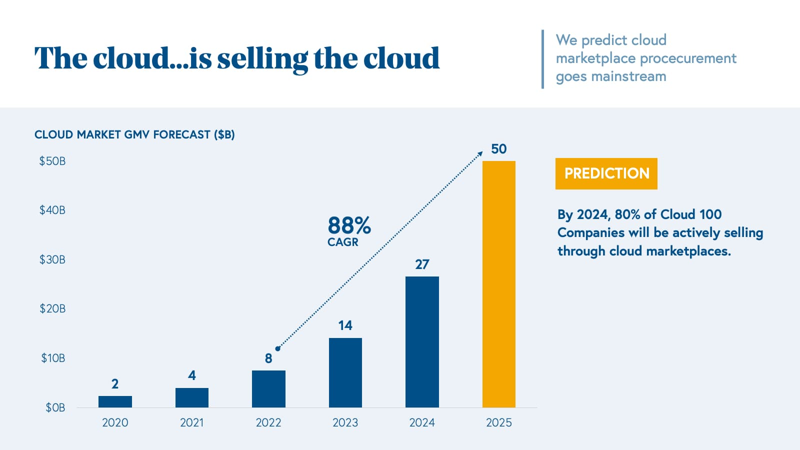Why Marketplaces Are the Future of SaaS Go-to-Market

“Never before have SaaS companies spent SO MUCH for SO LITTLE!” With one LinkedIn line, David Spitz described the biggest challenge in SaaS. CACs have reached likely all-time highs, at a time when new logo growth is more important than ever.
Will the “Year of Efficiency” become the “Decade of Efficiency”?
David’s post hit home because it contained inarguable facts. He described a reality where - between Q3 2021 and Q3 2023 - Median Go-to-Market Spend Ratio of Public SaaS companies grew from 160% to 264%. In case you’re wondering, David’s definition of “Go-to-Market Spend Ratio” is last 12 months Sales & Marketing spend as a percentage of last 12 months Net New ARR.
Or, how much did you burn to earn? Absolutely, you gotta spend money to make money. But when “efficiency” increasingly means “profit” there’s a limit.
On the high end (>450% Go-to-Market Spend Ratio) New Relic spent $6 to acquire every $1 of Net New ARR in 2023. A dozen companies - including Domo, Yext, Everbridge, Zoom, and WalkMe - joined them in the >450% club. The higher the spend, the longer the CAC payback period. You’re borrowing from the future.

It’s the same story in Private SaaS. From 2022 to 2023 median year-on-year revenue growth slowed from 40% to 24% for $20-50 million ARR SaaS, as CAC payback periods extended from 16 to 22 months (source: OpenView).
It’s no wonder 73% of founders were most worried about GTM execution in 2023. They’re hungry for new, scalable ways to efficiently acquire new customers, while retaining and growing their existing base.
Marketplaces to the rescue
The owners of the Top 50 App Marketplaces - including HubSpot, Miro, Monday.com, and Stripe, enjoyed a combined audience of over 38 million paying customers in 2023 - and grew that number 20-30% YoY. Combined, their customers spent over USD$100 billion buying software built and sold by them in 2023.
Those same customers spent even more on 3rd party software distributed by these Platforms.
For every $1 HubSpot generates, $6 is earned by 3rd party providers of software/services discovered through HubSpot’s ecosystem and marketplaces. HubSpot customers install an average of 9 partner apps (up from 7 a year ago), through 900,000 monthly visits to their App Marketplace. For every $1 Microsoft earns, 3rd party software providers earn $10.11. Shopify customers install an average of 6 partner apps. That’s… hella big.

Cloud Marketplace Gross Merchandise Value (GMV) is on a tear, too. AWS, GCP, and Azure’s Cloud Marketplaces will generate a combined $27 billion SaaS GMV in 2024. That same number stood at $2 billion in 2020. It will exceed $50 billion next year (source: Bessemer).
Never have startups spent so little for so much
Startups like QuotaPath generate 40% of all their demo requests through their HubSpot App Marketplace listing. They close 75% of App Marketplace referred deals, and HubSpot-integrated customers sit well above 120% net dollar retention. Cycle acquire 80% of their customers through App Marketplaces like HubSpot and Linear.
They’re capitalizing on the emergence of millennial, integration-first - marketplace-first - SaaS buyers.
There are thousands of niche “Built for Platform” SaaS businesses generating multiple-millions of dollars of revenue through App Marketplaces like Shopify, Atlassian and Slack. OrgChartHub is my favourite HubSpot example - bootstrapped, profitable, growing. One Atlassian partner, Appfire, generated $150 million ARR in 2022 from their suite of “Built for Atlassian” apps.
These startups and scale-ups don’t have unlimited sales and marketing budgets. They can’t spend $6 to earn $1 of ARR. Instead, they lean on App Marketplaces to acquire customers at low CACs - and retain them longer. Their products are discovered, trialled, and bought with a click (well, maybe two or three clicks).
Surely if they can do it, anyone can? There’s never been a better time for SaaS businesses to join the marketplace party.
